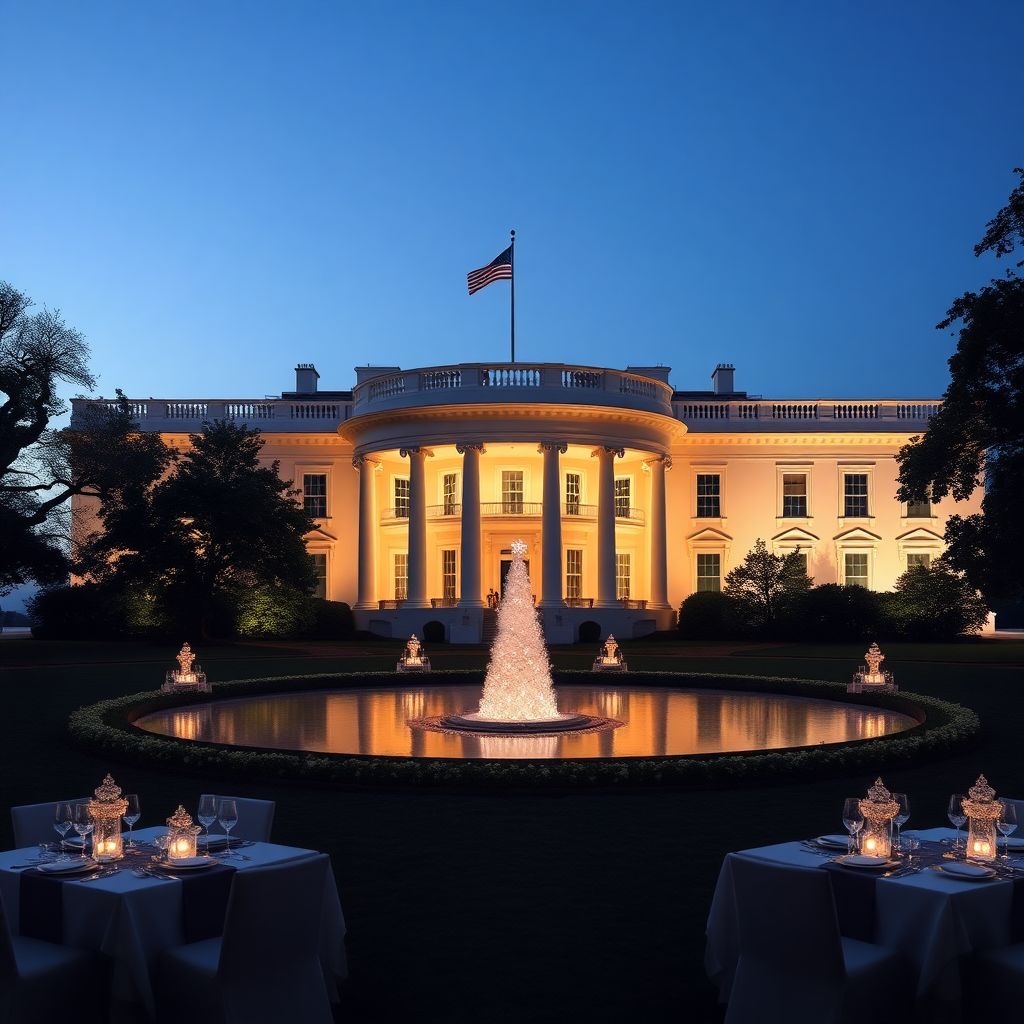Ripple, Tether, and Coinbase have emerged as notable contributors to a high-profile initiative spearheaded by former U.S. President Donald Trump: the construction of a $300 million White House ballroom. Their participation marks a significant milestone in the evolving relationship between the cryptocurrency sector and American politics, underscoring how digital finance is increasingly shaping the political landscape.
The ambitious project involves a 90,000-square-foot ballroom being erected on the East Wing grounds of the White House. Entirely funded by private donors, construction commenced earlier in October and is projected to conclude before the end of Trump’s current political term. While the Trump team emphasizes that the endeavor comes at no cost to taxpayers, the move has attracted scrutiny over the influence such donors might wield in return for their financial support.
Among the roughly 40 entities backing the project are household names from various industries, including tech giants like Amazon and Google, as well as defense contractor Lockheed Martin. However, the inclusion of cryptocurrency firms such as Coinbase, Ripple, and Tether is particularly noteworthy. It represents the first time companies from the blockchain and digital asset space have appeared on a donor list for a White House project of this magnitude.
Coinbase, under the leadership of CEO Brian Armstrong, has been a vocal advocate for clearer regulatory frameworks for digital assets within the United States. The company has spent years lobbying lawmakers and regulatory agencies to provide a more predictable environment for crypto businesses. Ripple, best known for its XRP token, has also made strategic inroads in Washington, D.C. In March, Ripple CEO Brad Garlinghouse reportedly met with Trump during a blockchain summit, signaling growing ties between the company and political leaders.
Tether, the issuer of the world’s largest stablecoin by market capitalization, is also part of the donor roster through its U.S. division, Tether America. The firm’s involvement highlights the rising influence of stablecoins in traditional finance, as they increasingly serve as a bridge between digital assets and fiat currencies.
Sources suggest that donors may receive symbolic acknowledgments within the ballroom—such as engraved plaques or personalized fixtures—though the full extent of recognition remains under wraps. The donor list also includes notable crypto advocates such as Cameron and Tyler Winklevoss, co-founders of Gemini, further signaling blockchain’s deepening roots in the political sphere.
This development comes on the heels of several crypto-friendly policy moves by the Trump administration. These range from executive orders encouraging blockchain innovation to Trump’s recent pardon of Binance founder Changpeng Zhao, a controversial figure within the digital asset industry. Additionally, Brian Armstrong revealed this week that a new legislative proposal focused on crypto market structure is nearly finalized, potentially ushering in a more favorable regulatory climate for decentralized finance and stablecoin projects.
Despite the positive momentum for crypto firms, the project hasn’t been without its detractors. Critics, including Senator Elizabeth Warren and former Secretary of State Hillary Clinton, have voiced concerns over the potential for “pay-to-play” dynamics, where large donations might translate into political access or influence. Preservationist groups have also filed legal challenges in an attempt to delay or halt construction, citing historical and architectural concerns.
Nevertheless, industry analysts view the involvement of Coinbase, Ripple, and Tether as a defining moment for crypto’s role in Washington. No longer relegated to the periphery of policy discussions, these companies are now helping shape the very infrastructure of the nation’s political institutions. Their support for a symbolic and strategic property like the White House ballroom suggests a desire not only for influence but also for legitimacy within the broader framework of American governance.
Beyond the symbolic value, the ballroom initiative reflects a broader strategic pivot by the crypto industry. By aligning with high-profile political figures and contributing to nationally significant projects, these firms are positioning themselves as indispensable players in shaping the future of finance and regulation in the U.S.
This shift is also indicative of a maturing industry that understands the importance of political engagement. As regulatory debates surrounding cryptocurrencies continue to evolve—from issues of AML (anti-money laundering) compliance to the legal classification of stablecoins—having a seat at the table is becoming increasingly vital. And with billions in market capitalization and millions of users globally, crypto firms now possess the economic clout to assert real influence.
Moreover, the ballroom project could serve as a litmus test for how future administrations interact with the crypto industry. If the Trump-led initiative proves successful and garners public support, it may encourage other political leaders to engage more directly with digital asset companies, whether through policy consultations, donations, or strategic partnerships.
It also raises questions about the long-term implications of corporate-funded political infrastructure. As more private entities become involved in shaping the physical and ideological spaces of governance, concerns about transparency, accountability, and democratic oversight will likely intensify.
Additionally, the ballroom’s construction may set a precedent for how future White House projects are funded. If this experiment in private financing is deemed effective and efficient, it could pave the way for similar collaborations across other federal institutions, potentially redefining the boundaries between public and private investment in national heritage sites.
In summary, the participation of Ripple, Tether, and Coinbase in funding a $300 million White House ballroom signifies far more than a donation—it marks a pivotal moment in the integration of digital finance into the heart of American political life. As crypto companies continue to embed themselves within traditional power structures, their impact on policy, regulation, and even national identity is poised to grow.

